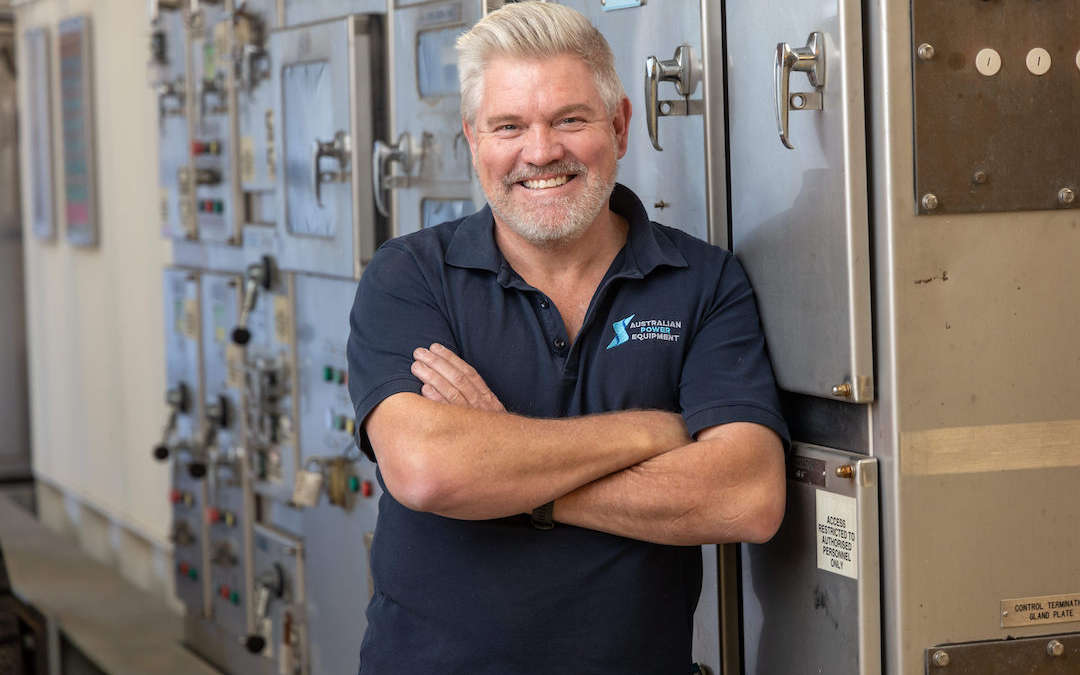We chat with Andrew Cockbain about how innovative critical sourcing and the principles of a circular economy are driving the sustainability goals of Australian Power Equipment.
Opener: Andrew Cockbain. Image: supplied
How has your background in engineering shaped your approach to Australian Power Equipment?
My background as an electrical engineer was in predominantly large service, infrastructure and resources sectors around Australia and internationally in Asia, Europe and Africa.
Having worked as both a manager and project manager, I have extensive experience in providing high voltage electrical engineering solutions, as well as project management and engineering integration that involve integration complexities to the end client. I have also consulted directly within mine sites, so I understand some of the demands they face, and the critical elements that they need from their suppliers.
In launching Australian Power Equipment with my business partner Abby Crawford, we believed that between us we had the experience to offer not only incredibly effective power solutions, but to create a business that focused on superior customer service, sustainability and culture.

Siemens Nxplus C circuit breakers. Image: supplied.
How does Australian Power Equipment incorporate the principles of a circular economy in its operations and product lifecycle?
While a core component of our business is based on our clients ordering new equipment to specification from the range of proven brands we represent in Australia (B&D Transformers, Üntel cables, Leishstung Energie switchgear, WE Walters substations to name a few), there is a growing demand for products that can provide solutions quickly.
We have significant knowledge of stranded assets from various sites around Australia and internationally, and can overhaul and repurpose these in a matter of weeks. This saves time and saves them from landfill or scrap, which is a high-energy cost that impacts the environment. The rehabilitated equipment may be a stop-gap solution, or sometimes it is spot on for the client’s requirements, and we hire or sell to them for the duration of their operations. Critical sourcing utilises existing assets, it helps keep industry going with minimal shutdown and it underscores our customer service model. As I like to say, “if you’re stuck, we’ll get you unstuck.”

Abby Crawford, co-founder of Australian Power Equipment. Image: supplied.
Managing a company with just two directors and no additional staff is a unique approach. How does Australian Power Equipment operate under this structure and what are the advantages or challenges?
Myself and Abby have both worked within large national and international corporations as well as independently, and have built up a wealth of contacts we can reach out to for various services. We launched Australian Power Equipment during Covid, and have experienced rapid growth – rather than employ a production team, we are able to select the appropriate service personnel or business to support the specific role. It keeps us agile and at the same time the client knows our focus is on the safety, quality and reliability of the delivered product.

Circuit breakers. Image: supplied.
Looking ahead, what are your aspirations in terms of sustainability and market expansion over the next five years?
I see Australian Power Equipment continuing to grow not only in the range of products and services we offer our clients, but also in the geographical areas that we operate in. Sustainability is going to be a big area of development and growth: it’s such a critically important aspect for every business in Australia to be embracing.
If you enjoyed this interview with Andrew Cockbain, check out more Aussie business stories in our Business section.

